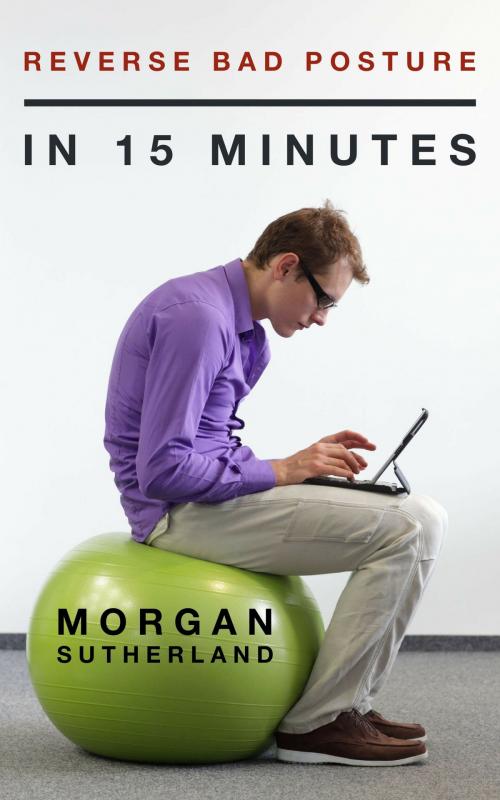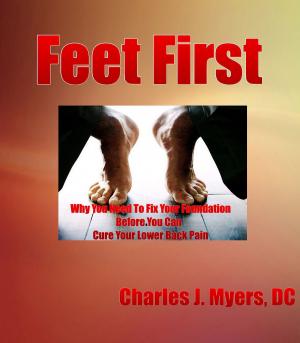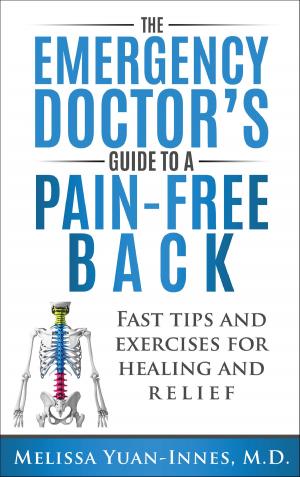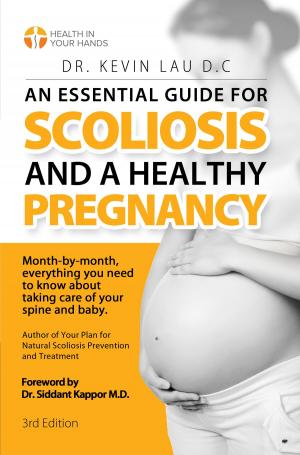Reverse Bad Posture in 15 Minutes: 20 Effective Exercises that Fix Forward Head Posture, Rounded Shoulders, and Hunched Back Posture in Just 15 Minutes per Day
Nonfiction, Health & Well Being, Health, Work Related Health, Ailments & Diseases, Musculoskeletal| Author: | Morgan Sutherland | ISBN: | 9781370297122 |
| Publisher: | Morgan Sutherland | Publication: | March 2, 2018 |
| Imprint: | Smashwords Edition | Language: | English |
| Author: | Morgan Sutherland |
| ISBN: | 9781370297122 |
| Publisher: | Morgan Sutherland |
| Publication: | March 2, 2018 |
| Imprint: | Smashwords Edition |
| Language: | English |
Neglected postures, such as rounding your low back while sitting for extended periods of time in front of the computer, standing for hours stooped over, sleeping improperly, and lifting poorly, can all lead to chronic back pain.
Maintaining the natural lumbar curve in your low back is essential to preventing posture-related back pain. This natural curve works as a shock absorber, helping to distribute weight along the length of your spine.
Adjusting postural distortions can help stop back pain. A basic remedy to sitting all day is to simply get up! Frequently getting up from a seated position and doing specific, quick, and easy realignment exercises can help you re-educate your muscles from getting stuck in a concaved Cro-Magnon posture.
In today’s culture, everyone seems to be constantly plugged into some device, be it a computer, laptop, tablet, or smartphone. Sedentary lifestyles inevitably result in thousands of hours spent with your body resembling a human question mark—head jutting forward, shoulders are rounding, and stomachs getting closer to your knees.
The term “Text Neck” has been used time and time again to describe the repetitive-use injury that occurs to your upper back, neck muscles, forearms, wrists, and hands caused by a combination of poor posture, excessive texting, and smartphone use.
One of the most common Text Neck symptoms is a crick in the neck and upper shoulders. This can develop from . . . over-stressing your neck muscles from excessive texting, awkward sleep positions, harshly twisting or turning your head during exercise, and from clocking hours of Quasimodo-like keyboard posture while hunching over your desk.
Did you know that for every inch the head moves forward in posture, it increases the weight of the head by a staggering 10 pounds? The average head weighs approximately 11 pounds.
So, with that knowledge, when a head is held forward from the shoulders by only 3 inches, it causes approximately 43 pounds of pressure on the neck and upper back muscles.
Now that’s a potential for a 43-pound headache. Yikes!
If you have Text Neck, then it’s also very likely that you have rounded shoulders.
Rounded shoulders cause your upper back muscles to overstretch and tighten the chest muscles.
This posture can potentially compress the brachial plexus, the network of nerves that originate in the neck and feed into the armpit region and down into the arms. A brachial plexus impingement can lead to a number of problems, ranging from numbness in the hands to thoracic outlet syndrome or carpal tunnel–like symptoms.
The following 20 exercises in this book are designed to fix forward head posture, rounded shoulders, and hunched back posture in just 15 minutes per day.
Neglected postures, such as rounding your low back while sitting for extended periods of time in front of the computer, standing for hours stooped over, sleeping improperly, and lifting poorly, can all lead to chronic back pain.
Maintaining the natural lumbar curve in your low back is essential to preventing posture-related back pain. This natural curve works as a shock absorber, helping to distribute weight along the length of your spine.
Adjusting postural distortions can help stop back pain. A basic remedy to sitting all day is to simply get up! Frequently getting up from a seated position and doing specific, quick, and easy realignment exercises can help you re-educate your muscles from getting stuck in a concaved Cro-Magnon posture.
In today’s culture, everyone seems to be constantly plugged into some device, be it a computer, laptop, tablet, or smartphone. Sedentary lifestyles inevitably result in thousands of hours spent with your body resembling a human question mark—head jutting forward, shoulders are rounding, and stomachs getting closer to your knees.
The term “Text Neck” has been used time and time again to describe the repetitive-use injury that occurs to your upper back, neck muscles, forearms, wrists, and hands caused by a combination of poor posture, excessive texting, and smartphone use.
One of the most common Text Neck symptoms is a crick in the neck and upper shoulders. This can develop from . . . over-stressing your neck muscles from excessive texting, awkward sleep positions, harshly twisting or turning your head during exercise, and from clocking hours of Quasimodo-like keyboard posture while hunching over your desk.
Did you know that for every inch the head moves forward in posture, it increases the weight of the head by a staggering 10 pounds? The average head weighs approximately 11 pounds.
So, with that knowledge, when a head is held forward from the shoulders by only 3 inches, it causes approximately 43 pounds of pressure on the neck and upper back muscles.
Now that’s a potential for a 43-pound headache. Yikes!
If you have Text Neck, then it’s also very likely that you have rounded shoulders.
Rounded shoulders cause your upper back muscles to overstretch and tighten the chest muscles.
This posture can potentially compress the brachial plexus, the network of nerves that originate in the neck and feed into the armpit region and down into the arms. A brachial plexus impingement can lead to a number of problems, ranging from numbness in the hands to thoracic outlet syndrome or carpal tunnel–like symptoms.
The following 20 exercises in this book are designed to fix forward head posture, rounded shoulders, and hunched back posture in just 15 minutes per day.















